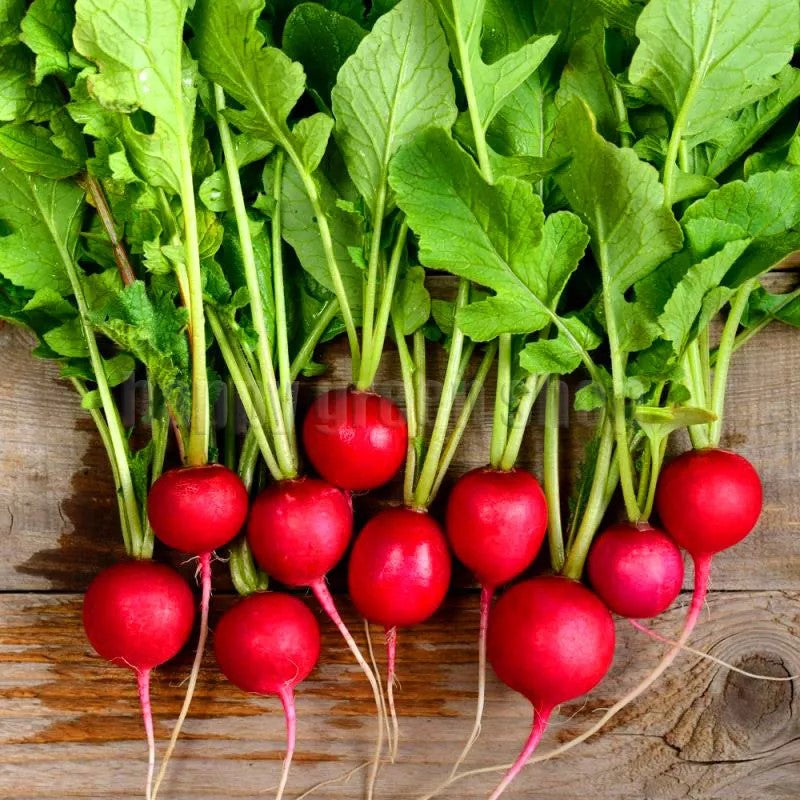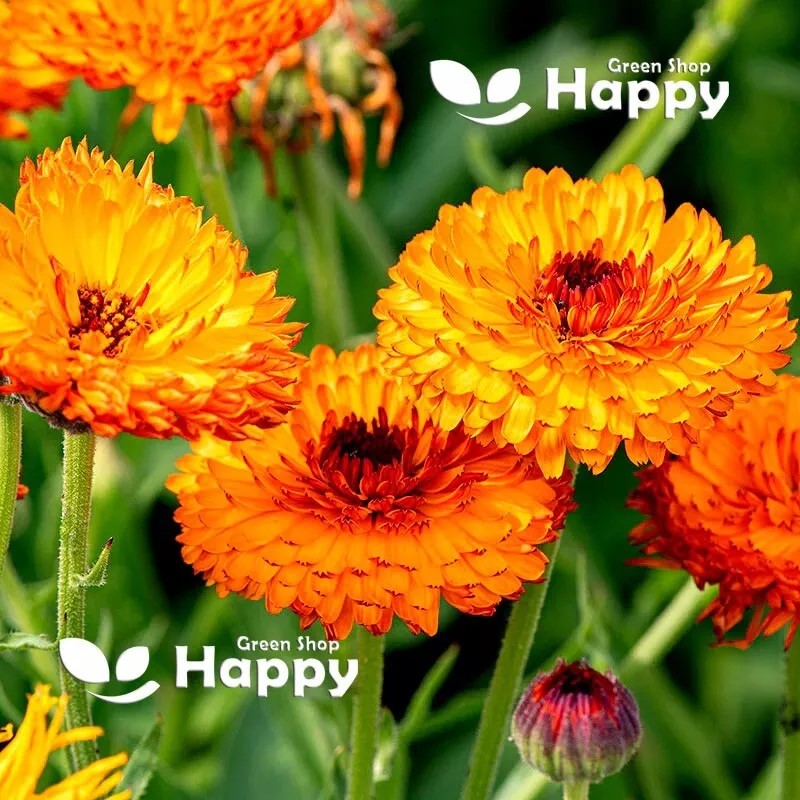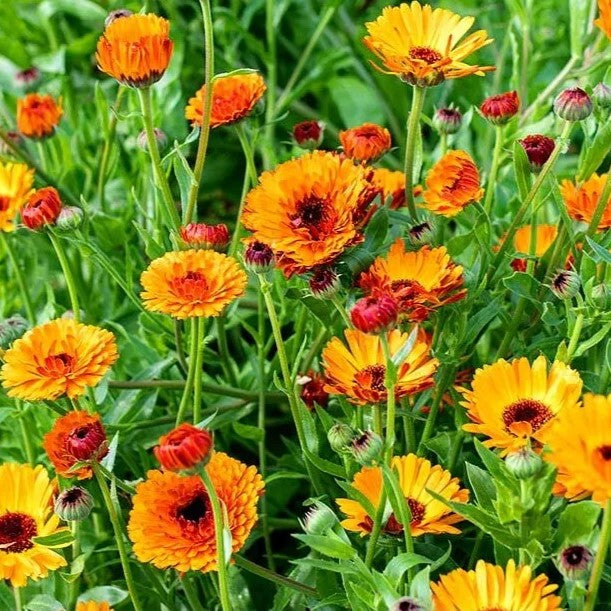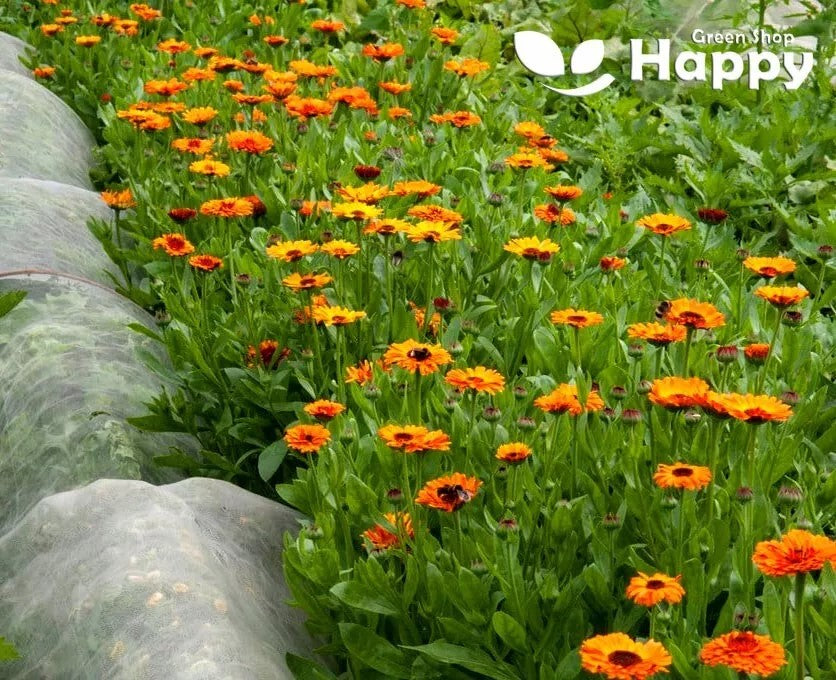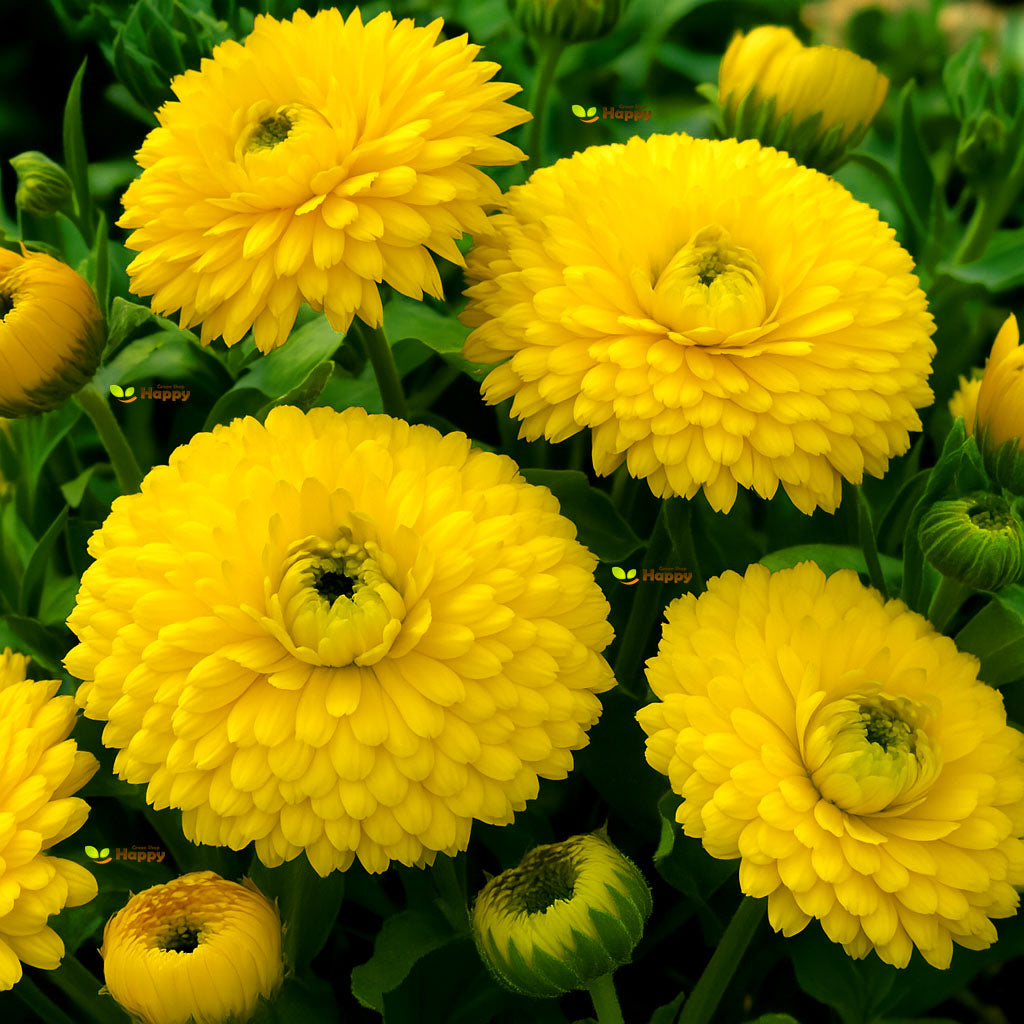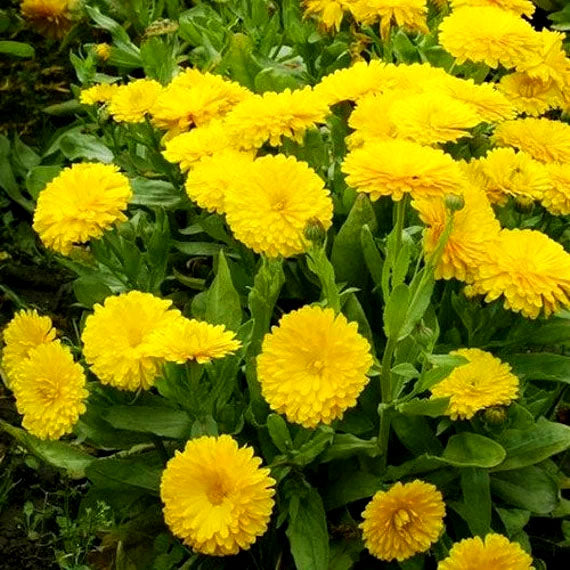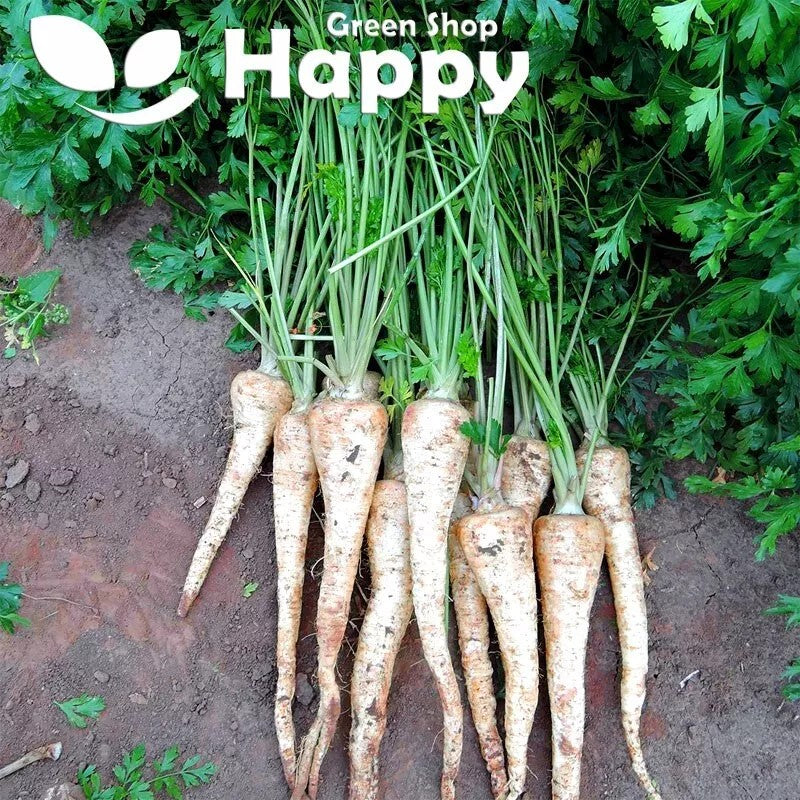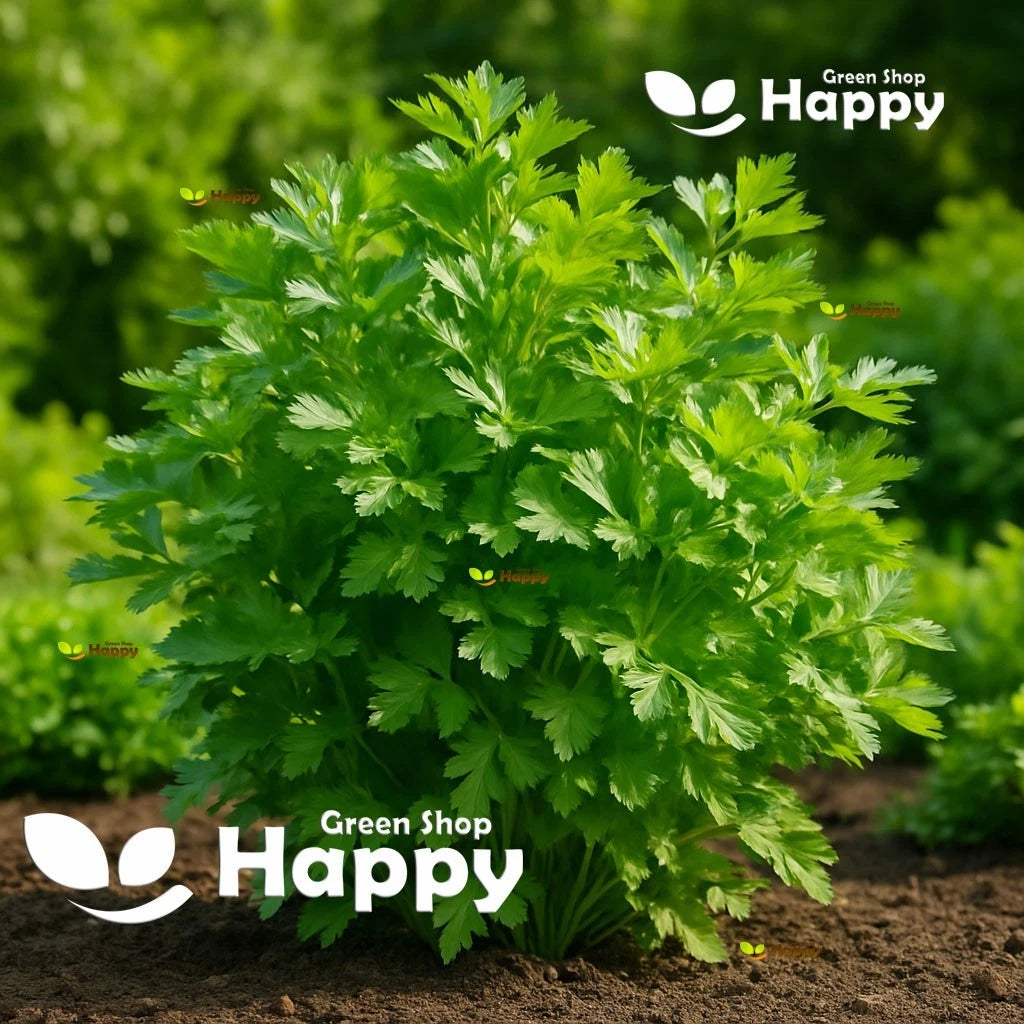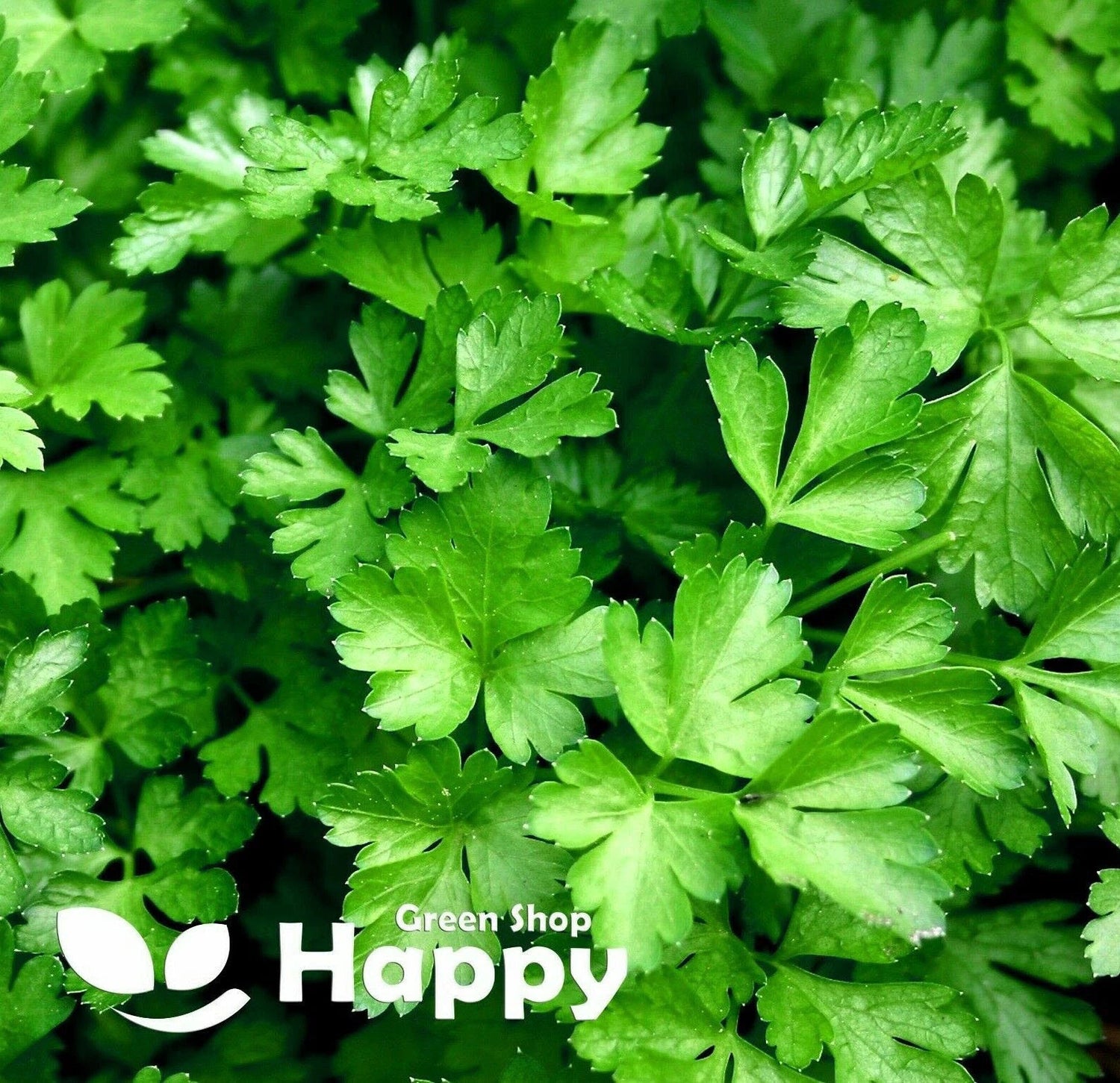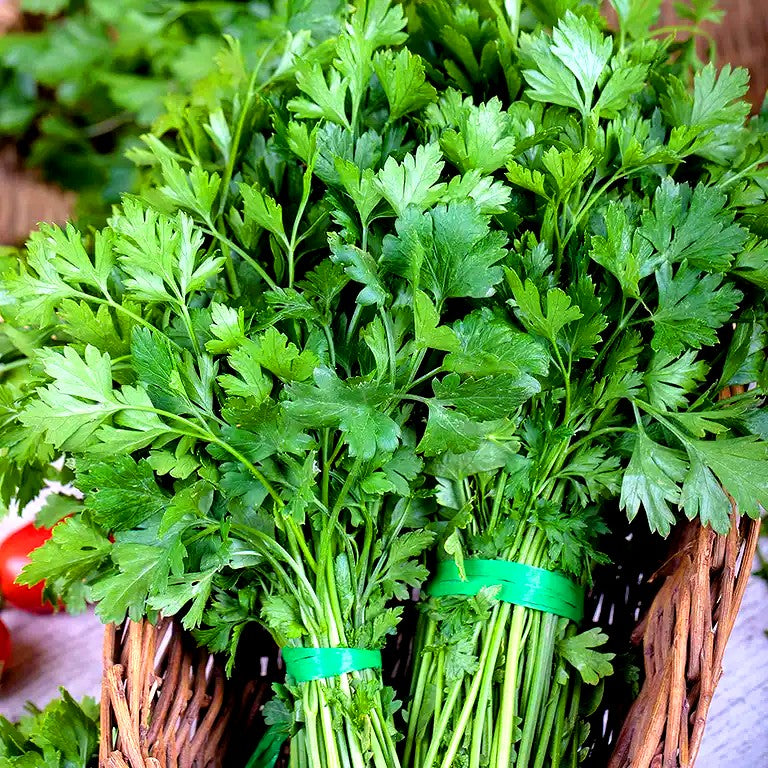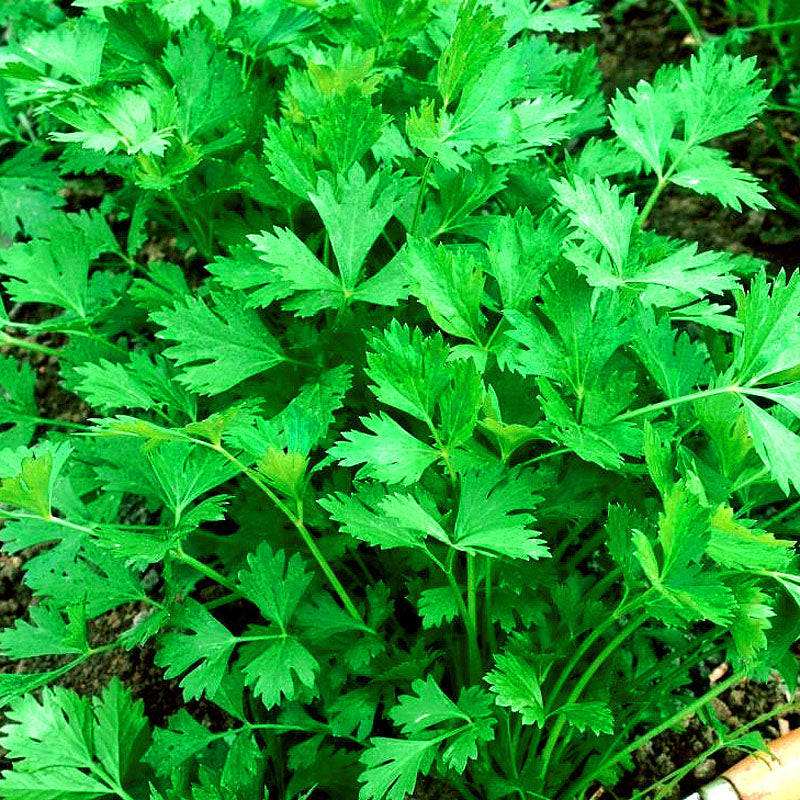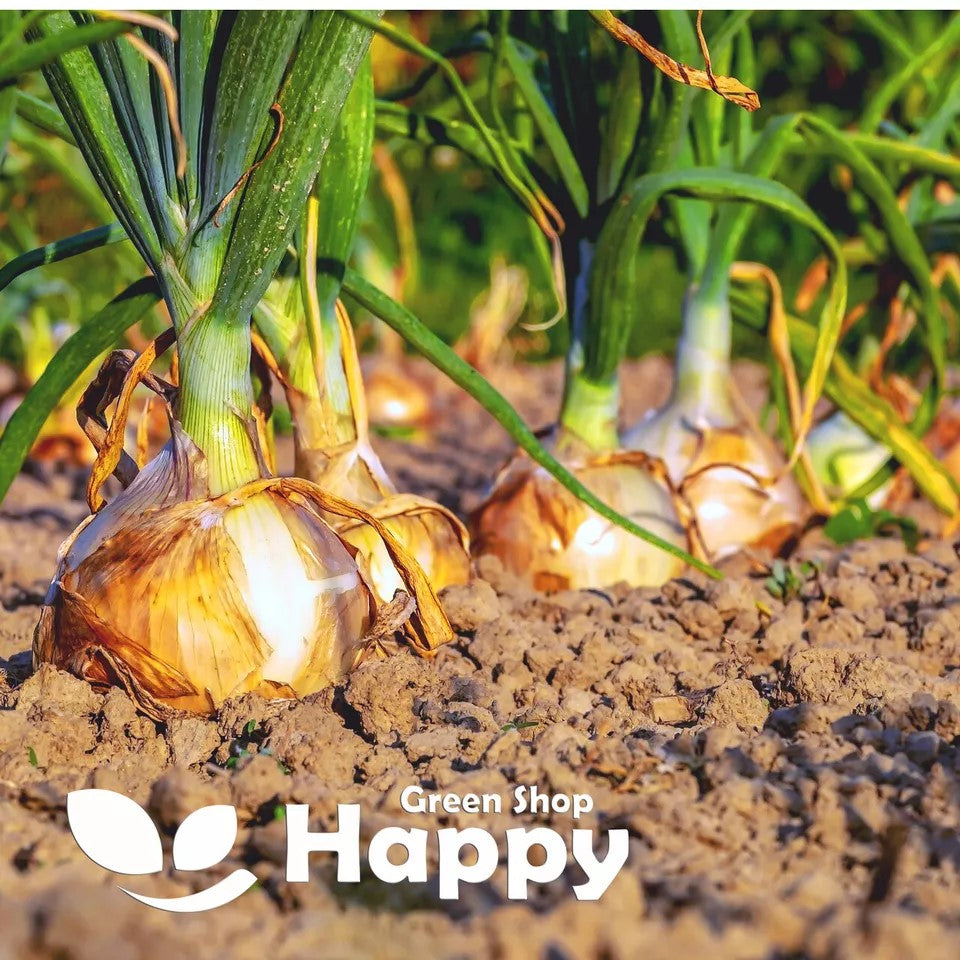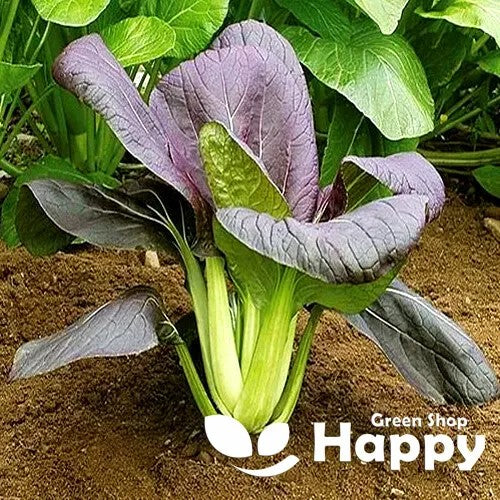Sort by:
225 products
225 products
Pot Marigold Dwarf ‘Sunset Buff’ – Apricot – 1,000 Seeds (Calendula officinalis)
The Dwarf Pot Marigold ‘Sunset Buff’ is a charming, compact variety producing apricot-peach blooms with soft golden undertones. Its warm pastel shades bring a unique elegance to beds, borders, and cottage gardens. Easy to grow and long-flowering, this hardy annual is also edible, with petals traditionally used to decorate salads or for natural dye.
Highlights
-
Distinctive apricot–buff blooms with golden tones
-
Compact, dwarf habit – perfect for pots and borders
-
Long flowering season from early summer to autumn
-
Attracts pollinators and beneficial insects
-
Edible petals for salads and herbal uses
Key Features
-
Botanical Name: Calendula officinalis
-
Variety: Dwarf ‘Sunset Buff’ (Apricot)
-
Seed Count: 1,000 seeds per pack
-
Height/Spread: 25–30 cm tall, compact growth
-
Position: Full sun, well-drained soil
-
Flowering Period: June – October
Perfect For
-
Bedding, borders, and cottage gardens
-
Patio pots and containers
-
Pollinator-friendly gardens
-
Edible flower displays and herbal uses
Sowing Instructions
-
Sow outdoors March–May or August–September for overwintering
-
Sow directly into soil, lightly cover seeds
-
Germination: 7–14 days
-
Thin seedlings to 20–25 cm apart
-
Deadhead regularly for prolonged flowering
Pot Marigold ‘Indian Prince’ Seeds (Calendula officinalis) – 1g
Bring rich, warm tones to your garden with Pot Marigold ‘Indian Prince’ (Calendula officinalis). This annual produces striking deep orange flowers ideal for cutting gardens, borders, and containers. Hardy and easy to grow, it’s perfect for fresh bouquets, edible petals, and attracting pollinators.
How to Grow
-
Sow directly outdoors in spring after the last frost or indoors 4–6 weeks earlier.
-
Use well-drained, fertile soil in full sun.
-
Scatter seeds thinly and cover lightly with soil.
-
Keep soil moist until germination (7–14 days).
-
Thin seedlings to 25–30 cm apart for healthy growth.
-
Remove spent flowers regularly to encourage continuous blooms.
Key Features
-
Large, deep orange flowers with rich color
-
Long-flowering annual, perfect for cutting gardens
-
Easy to grow and maintain
-
Attracts bees, butterflies, and other pollinators
-
Edible petals suitable for salads and culinary decoration
Ideal For
-
Cutting gardens for fresh bouquets
-
Flower beds, borders, and containers
-
Pollinator-friendly gardens
-
Culinary use as edible petals
Sowing
-
Best time: Spring outdoors or 4–6 weeks earlier indoors
-
Germination: 7–14 days
-
Sow thinly, cover lightly, and keep soil moist
-
Prefers full sun and fertile, well-drained soil
Quick Tip
-
Regular deadheading prolongs flowering and keeps plants producing vibrant blooms throughout the season.
Pot Marigold "Golden Emperor" 1.60g of seeds (Calendula officnals) cutting flower
£1.15
Unit price perPot Marigold "Golden Emperor" 1.60g of seeds (Calendula officnals) cutting flower
£1.15
Unit price perPot Marigold ‘Golden Emperor’ Seeds (Calendula officinalis) – 1.60g
Add vibrant golden blooms to your garden with Pot Marigold ‘Golden Emperor’ (Calendula officinalis). This annual produces large, bright yellow-orange flowers ideal for cutting gardens, borders, and containers. Easy to grow and long-flowering, it’s perfect for fresh bouquets and edible flower uses, while attracting pollinators to your garden.
How to Grow
-
Sow directly outdoors in spring after the last frost or indoors 4–6 weeks earlier.
-
Use well-drained, fertile soil in full sun.
-
Scatter seeds thinly and cover lightly with soil.
-
Keep soil moist until germination (7–14 days).
-
Thin seedlings to 25–30 cm apart for healthy growth.
-
Regularly remove spent flowers to encourage continuous blooming.
Key Features
-
Large, vibrant golden-yellow flowers
-
Long-flowering annual, ideal for cutting gardens
-
Easy to grow and maintain
-
Attracts bees, butterflies, and other pollinators
-
Edible petals suitable for salads and garnishes
Ideal For
-
Cutting gardens for fresh bouquets
-
Flower beds, borders, and containers
-
Pollinator-friendly gardens
-
Edible flower use in salads and culinary decoration
Sowing
-
Best time: Spring outdoors or 4–6 weeks earlier indoors
-
Germination: 7–14 days
-
Sow thinly, cover lightly, and keep soil moist
-
Prefers full sun and fertile, well-drained soil
Quick Tip
-
Deadhead regularly to prolong flowering and maintain vibrant, healthy blooms throughout the season.
Parsley Root 'Osbourne' Seeds (Petroselinum crispum)
Grow a versatile and flavorful root vegetable with Parsley Root 'Osbourne', a traditional European variety prized for its long, white, carrot-like roots and aromatic leaves. Both root and leaves are edible: the roots are perfect for soups, stews, and roasting, while the leaves can be used fresh like regular parsley. Hardy and easy to grow, it’s a must-have for kitchen gardens.
How to Grow
-
Sow seeds directly outdoors from early spring.
-
Prefers fertile, well-drained soil with full sun exposure.
-
Sow 1 cm deep in rows 30 cm apart.
-
Thin seedlings to 5–10 cm apart.
-
Harvest roots when they reach 15–20 cm long, before heavy frost.
Key Features
-
Long, white, carrot-like roots with sweet, aromatic flavor
-
Dual-purpose: edible roots and flavorful parsley leaves
-
Hardy and reliable in most garden soils
-
Excellent for soups, stews, roasting, and garnishing
-
Traditional European variety with long history
Ideal For
-
Winter soups, stews, and roasted dishes
-
Fresh parsley leaves for salads and garnishing
-
Home gardeners seeking versatile, dual-purpose crops
-
Kitchen gardens and allotments
Sowing
-
Best time: Early spring
-
Depth: 1 cm
-
Row spacing: 30 cm
-
Plant spacing: Thin to 5–10 cm apart
-
Harvest: 90–120 days after sowing
Quick Tip
-
For best flavor, harvest roots before the first hard frost; store in cool, dark conditions.
Parsley Hamburg 'Alba' – Seeds (Petroselinum crispum)
Parsley Hamburg 'Alba' is a dual-purpose variety grown both for its large, white, parsnip-like roots and its flavorful parsley leaves. The roots are excellent roasted, boiled, or grated raw into salads, while the leaves can be used fresh as a garnish or in cooking. A versatile and easy-to-grow addition to the kitchen garden.
How to Grow
-
Sow outdoors: March – July, directly into well-prepared soil.
-
Thin seedlings to 15 cm apart in rows 30 cm apart.
-
Prefers fertile, light, well-drained soil.
-
Water regularly for strong root development.
Key Features
-
Root parsley variety with sweet, nutty flavor
-
Dual-purpose: edible roots & aromatic leaves
-
Easy to grow and hardy in most soils
-
Stores well after harvest
-
Great for soups, stews, roasting, and garnishing
Ideal For
-
Root vegetable dishes
-
Fresh parsley leaves for cooking
-
Kitchen gardens and allotments
Sowing & Harvest
-
Sow: March – July
-
Harvest: October – December
Quick Tip
For the best roots, loosen soil well before sowing to allow long, straight growth.
Parsley 'Italian Giant' Seeds (Petroselinum crispum)
Enjoy rich flavor and lush harvests with Parsley 'Italian Giant', a robust flat-leaf variety prized for its strong, aromatic taste and vigorous growth. With large, dark green leaves and a long cutting period, it’s perfect for garnishing, cooking, and seasoning. Easy to grow in the garden or containers, it’s a must-have herb for every kitchen gardener.
How to Grow
-
Sow indoors in early spring or directly outdoors after frost.
-
Use fertile, moist, well-drained soil in sun or partial shade.
-
Sow seeds 0.5 cm deep in rows 25–30 cm apart.
-
Thin seedlings to 20–25 cm apart for strong plants.
-
Harvest regularly to encourage new growth.
Key Features
-
Flat-leaf parsley with strong, aromatic flavor
-
Vigorous, robust growth and large green leaves
-
Long cutting period for continuous harvest
-
Ideal for cooking, garnishing, and seasoning
-
Grows well in beds, pots, and herb gardens
Ideal For
-
Garnishes and fresh salads
-
Cooking and seasoning sauces, soups, and stews
-
Herb gardens and containers
-
Gardeners who want reliable, productive herbs
Sowing
-
Best time: Spring, or indoors earlier
-
Depth: 0.5 cm
-
Spacing: Thin to 20–25 cm apart
-
Prefers moist, fertile, well-drained soil
Quick Tip
-
Soak seeds overnight before sowing to improve germination.
Parsley 'Festival 68' – Seeds (Petroselinum crispum)
Bring fresh, aromatic flavor to your kitchen with Parsley 'Festival 68', a robust, curly-leaf variety known for its high yield and exceptional flavor. Ideal for soups, salads, sauces, and garnishes, this versatile herb thrives in home gardens and containers. Easy to grow and slow to bolt, 'Festival 68' ensures a long-lasting supply of fresh parsley throughout the season.
How to Grow
. Sow indoors: February – April, 0.5–1 cm deep in pots or trays
. Sow outdoors: March – June in fertile, well-drained soil
. Thin seedlings to 15–20 cm apart
. Prefers full sun or partial shade and regular watering
. Harvest leaves continuously to encourage new growth
Key Features
. Curly-leaf parsley with strong flavor
. High-yielding and slow to bolt
. Suitable for beds, borders, and containers
. Long-lasting harvest for fresh cooking
. Easy to grow, versatile culinary herb
Ideal For
. Soups, salads, sauces, and garnishes
. Home gardeners and container cultivation
. Continuous fresh herb supply throughout the season
. Companion planting with tomatoes, carrots, or asparagus
Sowing & Harvest
. Sow: February – June
. Harvest: April – October
Quick Tip
Regularly snip outer leaves instead of cutting the entire plant to promote continuous growth.
Onion 'Signum' Seeds (Allium cepa)
Grow strong, reliable crops with Onion 'Signum', a versatile variety producing uniform, medium-sized bulbs with excellent storage qualities. Known for its firm texture and balanced flavor, this onion is a staple for every kitchen, perfect for cooking, salads, and long-term use through winter. A resilient and productive choice for gardeners.
How to Grow
-
Sow indoors in early spring or directly outdoors when soil is workable.
-
Prefers fertile, well-drained soil in full sun.
-
Sow seeds thinly 1 cm deep in rows 25–30 cm apart.
-
Thin seedlings to 10 cm spacing.
-
Keep soil moist but not waterlogged.
Key Features
-
Produces medium, round, uniform bulbs
-
Firm texture with mild, balanced flavor
-
Excellent for storage after harvest
-
High yields with reliable performance
-
Suitable for fresh use or winter storage
Ideal For
-
Everyday kitchen use
-
Long-term storage and winter supplies
-
Fresh cooking, salads, soups, and stews
-
Gardeners seeking a reliable, classic onion
Sowing
-
Best time: Early spring to early summer
-
Depth: 1 cm
-
Row spacing: 25–30 cm
-
Plant spacing: 10 cm after thinning
-
Harvest: Mid to late summer
Quick Tip
-
For the longest storage life, allow bulbs to dry thoroughly before storing in a cool, dark place.
Pak Choi Red 'Inferno' – Seeds (Brassica chinensis)
Bring vibrant color and rich flavor to your garden with Pak Choi Red 'Inferno'. This striking variety produces broad, deep-red leaves with green stems, offering a mild mustard flavor that is perfect for stir-fries, salads, and steaming. Fast-growing and highly productive, it thrives in cooler weather, making it an excellent choice for spring and autumn crops.
How to Grow
-
Sow outdoors from March to August, or under cover for early/late crops.
-
Sow thinly, 1 cm deep, in rows 25–30 cm apart.
-
Thin seedlings to 15–20 cm spacing.
-
Prefers moist, fertile, well-drained soil in sun or partial shade.
-
Harvest young for tender leaves or mature heads.
Key Features
-
Striking red-leaved Pak Choi variety
-
Mild mustard flavor with crunchy stems
-
Fast-growing and versatile in the kitchen
-
Thrives in cooler weather and resists bolting
-
Excellent for cut-and-come-again harvesting
Ideal For
-
Asian-inspired stir-fries and soups
-
Fresh salads and garnishes
-
Steaming, sautéing, or pickling
-
Kitchen gardens, raised beds, and containers
Sowing & Harvest
-
Sow: March to August
-
Depth: 1 cm
-
Spacing: 15–20 cm between plants, 25–30 cm between rows
-
Harvest: May to October
Quick Tip
-
Keep soil consistently moist to prevent plants from bolting, especially in summer.
Showing 108/225



